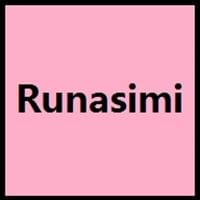Swahili and Quechua
Countries
African Union, Democratic Republic of the Congo, East African Community, Kenya
Argentina, Bolivia, Chile, Colombia, Ecuador, Peru
National Language
Burundi, Kenya, Madagascar, Malawi, Mozambique, South Sudan, Tanzania
Bolivia, Ecuador, Peru
Second Language
Not spoken in any of the countries
Not spoken in any of the countries
Speaking Continents
Africa
South America
Minority Language
Not spoken in any of the countries
Not spoken in any of the countries
Regulated By
Chama cha Kiswahili cha Taifa (Kenya)
Not Available
Interesting Facts
- Swahili language has borrowed many words from Arabic language.
- The oldest written scripts in swahili language were found in 18th century.
- One of the most widely spoken indigenous language in the America is Quechua.
- Quechua language has borrowed many words from Spanish.
Similar To
Burundi, Rwanda, Malawi Languages
Not Available
Derived From
Arabic Language
Not Available
Alphabets in
Swahili-Alphabets.jpg#200
Quechua-Alphabets.jpg#200
Writing Direction
Not Available
Not Available
Language Levels
Not Available
Hello
Habari
Rimaykullayki
Thank You
Asante
Solpayki
How Are You?
Habari gani?
Allillanchu
Good Night
Usiku mwema
Allin tuta
Good Evening
Habari za jioni
Wuynas nuchis
Good Afternoon
nzuri Alasiri
Wuynas tardis
Good Morning
Habari za asubuhi
Wuynus diyas
Please
tafadhali
Not Available
Sorry
pole
Pampachaykuway
I Love You
nakupenda
Kuyayki
Excuse Me
Samahani
Pampachaway
Dialect 1
Kiunguja
Ancash
Where They Speak
Zanzibar island
Peru
How Many People Speak
Not Available
Dialect 2
Kimrima
Huánuco
Where They Speak
Dar es Salaam
Peru
How Many People Speak
Not Available
Where They Speak
Kilwa
Peru
How Many People Speak
Not Available
Speaking Population
Not Available
Native Name
Not Available
Qhichwa
Alternative Names
Kisuaheli, Kiswahili
North La Paz Quechua
French Name
swahili
quechua
German Name
Swahili
Quechua-Sprache
Pronunciation
Not Available
Not Available
Ethnicity
Swahili people or Waswahili
Quechua
Origin
6th century
16th Century
Language Family
Niger-Congo Family
Quechumaran Family
Subgroup
Benue-Congo
Andean Equatorial
Branch
Bantu
Not Available
Early Forms
No early forms
No early forms
Standard Forms
Swahili
Quechua
Signed Forms
Not Available
Not Available
Scope
Individual, Macrolanguage
Macrolanguage
ISO 639 6
Not Available
Not Available
Glottocode
swah1254
quec1387
Linguasphere
99-AUS-m
No data Available
Language Type
Living
Living
Language Linguistic Typology
Not Available
Not Available
Language Morphological Typology
Not Available
Agglutinative, Synthetic
All Swahili and Quechua Dialects
Most languages have dialects where each dialect differ from other dialect with respect to grammar and vocabulary. Here you will get to know all Swahili and Quechua dialects. Various dialects of Swahili and Quechua language differ in their pronunciations and words. Dialects of Swahili are spoken in different Swahili Speaking Countries whereas Quechua Dialects are spoken in different Quechua speaking countries. Also the number of people speaking Swahili vs Quechua Dialects varies from few thousands to many millions. Some of the Swahili dialects include: Kiunguja, Kimrima. Quechua dialects include: Ancash , Huánuco. Also learn about dialects in South American Languages and North American Languages.
Swahili and Quechua Speaking population
Swahili and Quechua speaking population is one of the factors based on which Swahili and Quechua languages can be compared. The total count of Swahili and Quechua Speaking population in percentage is also given. The percentage of people speaking Swahili language is Not Available whereas the percentage of people speaking Quechua language is 0.13 %. When we compare the speaking population of any two languages we get to know which of two languages is more popular. Find more details about how many people speak Swahili and Quechua on Swahili vs Quechua where you will get native speakers, speaking population in percentage and native names.
Swahili and Quechua Language Codes
Swahili and Quechua language codes are used in those applications where using language names are tedious. Swahili and Quechua Language Codes include all the international language codes, glottocodes and linguasphere.





